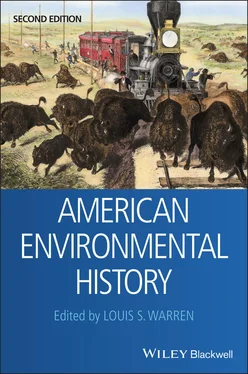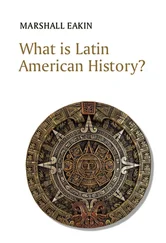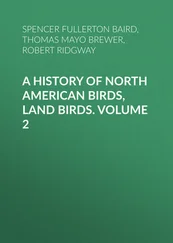1 ...6 7 8 10 11 12 ...37
The Built Landscape
Settlement
The Spaniards and other Europeans were impressed by large flourishing Indian cities such as Tenochtitlán, Quito, and Cuzco, and they took note of the extensive ruins of older, abandoned cities such as Cahokia, Teotihuacán, Tikal, Chan Chan, and Tiwanaku (Hardoy 1968). Most of these cities contained more than 50,000 people. Less notable, or possibly more taken for granted, was rural settlement – small villages of a few thousand or a few hundred people, hamlets of a few families, and dispersed farmsteads. The numbers and locations of much of this settlement will never be known. With the rapid decline of native populations, the abandonment of houses and entire villages and the decay of perishable materials quickly obscured sites, especially in the tropical lowlands.
We do have some early listings of villages, especially for Mexico and Peru. Elsewhere, archaeology is telling us more than ethnohistory. After initially focusing on large temple and administrative centers, archaeologists are now examining rural sustaining areas, with remarkable results. See, for example, Sanders et al. (1979) on the Basin of Mexico, Culbert and Rice (1990) on the Maya lowlands, and Fowler (1989) on Cahokia in Illinois. Evidence of human occupation for the artistic Santarém Culture phase (Tapajós chiefdom) on the lower Amazon extends over thousands of square kilometers, with large nucleated settlements (Roosevelt 1991, 101–02).
Much of the rural precontact settlement was semi-dispersed ( rancherías ), particularly in densely populated regions of Mexico and the Andes, probably reflecting poor food transport efficiency. Houses were both single-family and communal (pueblos, Huron long houses, Amazon malocas). Construction was of stone, earth, adobe, daub and wattle, grass, hides, brush, and bark. Much of the dispersed settlement not destroyed by depopulation was concentrated by the Spaniards into compact grid/plaza style new towns ( congregaciones , reducciones ) for administrative purposes.
James Parsons (1985, 161) has suggested that: “An apparent mania for earth moving, landscape engineering on a grand scale runs as a thread through much of New World prehistory.” Large quantities of both earth and stone were transferred to create various raised and sunken features, such as agricultural landforms, settlement, and ritual mounds, and cause-ways.
Mounds of different shapes and sizes were constructed throughout the Americas for temples, burials, settlement, and as effigies. The stone pyramids of Mexico and the Andes are well known, but equal monuments of earth were built in the Amazon, the Midwest United States, and elsewhere. The Mississippian period complex of 104 mounds at Cahokia near East St. Louis supported 30,000 people; the largest, Monk’s Mound, is currently 30.5 m high and covers 6.9 ha (Fowler 1989, 90, 192). Cahokia was the largest settlement north of the Río Grande until surpassed by New York City in 1775. An early survey estimated “at least 20,000 conical, linear, and effigy mounds” in Wisconsin (Stout 1911, 24). Overall, there must have been several hundred thousand artificial mounds in the Midwest and South. De Soto described such features still in use in 1539 (Silverberg 1968, 7). Thousands of settlement and other mounds dot the savanna landscape of Mojos in Bolivia (Denevan 1966). At the mouth of the Amazon on Marajó Island, one complex of 40 habitation mounds contained more than 10,000 people; one of these mounds is 20 m high while another is 90 ha in area (Roosevelt 1991, 31, 38).
Not all of the various earthworks scattered over the Americans were in use in 1492. Many had been long abandoned, but they constituted a conspicuous element of the landscape of 1492 and some are still prominent. Doubtless, many remain to be discovered, and others remain unrecognized as human or prehistoric features.
Roads, Causeways, and Trails
Large numbers of people and settlements necessitated extensive systems of overland travel routes to facilitate administration, trade, warfare, and social interaction (Hyslop 1984; Trombold 1991). Only hints of their former prominence survive. Many were simple traces across deserts or narrow paths cut into forests. A suggestion as to the importance of Amazon forest trails is the existence of more than 500 km of trail maintained by a single Kayapó village today (Posey 1985, 149). Some prehistoric footpaths were so intensively used for so long that they were incised into the ground and are still detectable, as has recently been described in Costa Rica (Sheets and Sever 1991).
Improved roads, at times stone-lined and drained, were constructed over great distances in the realms of the high civilizations. The Inca road network is estimated to have measured about 40,000 km, extending from southern Colombia to central Chile (Hyslop 1984, 224). Prehistoric causeways (raised roads) were built in the tropical lowlands (Denevan 1991); one Maya causeway is 100 km long, and there are more than 1,600 km of causeways in the Llanos de Mojos. Humboldt reported large prehistoric causeways in the Orinoco Llanos. Ferdinand Columbus described roads on Puerto Rico in 1493. Gaspar de Carvajal, traveling down the Amazon with Orellana in 1541, reported “highways” penetrating the forest from river bank villages. Joseph de Acosta (1880, (1) 171) in 1590 said that between Peru and Brazil, there were “waies as much beaten as those betwixt Salamanca and Valladolid.” Prehistoric roads in Chaco Canyon, New Mexico are described in Trombold (1991). Some routes were so well established and located that they have remained roads to this day.
A strong case can be made for significant environmental recovery and reduction of cultural features by the late eighteenth century as a result of Indian population decline. Henry Thoreau (1949, 132–37) believed, based on his reading of William Wood, that the New England forests of 1633 were more open, more park-like, with more berries and more wildlife, than Thoreau observed in 1855. Cronon (1983, 108), Pyne (1982, 51), Silver (1990, 104), Martin (1978, 181–82), and [M.] Williams (1989a) all maintain that the eastern forests recovered and filled in as a result of Indian depopulation, field abandonment, and reduction in burning. While probably correct, these writers give few specific examples, so further research is needed. The sixteenth-century fields and savannas of Colombia and Central America also had reverted to forest within 150 years after abandonment (Bennett 1968, 54; Parsons 1975, 30–31). On his fourth voyage in 1502–03, Columbus sailed along the north coast of Panama (Veragua). His son Ferdinand described lands which were well-peopled, full of houses, with many fields, and open with few trees. In contrast, in 1681 Lionel Wafer found most of the Caribbean coast of Panama forest covered and unpopulated. On the Pacific side in the eighteenth century, savannas were seldom mentioned; the main economic activity was the logging of tropical cedar, a tree that grows on the sites of abandoned fields and other disturbances (Sauer 1966, 132–33, 287–88). An earlier oscillation from forest destruction to recovery in the Yucatán is instructive. Whitmore et al. (1990, 35) estimate that the Maya had modified 75 percent of the environment by A.D. 800, and that following the Mayan collapse, forest recovery in the central lowlands was nearly complete when the Spaniards arrived.
The pace of forest regeneration, however, varied across the New World. Much of the southeastern United States remained treeless in the 1750s according to Rostlund (1957, 408, 409). He notes that the tangled brush that ensnarled the “Wilderness Campaign of 1864 in Virginia occupied the same land as did Captain John Smith’s ‘open groves with much good ground between without any shrubs’” in 1624; vegetation had only partially recovered over 240 years. The Kentucky barrens in contrast were largely reforested by the early nineteenth century (Sauer 1963, 30). The Alabama Black Belt vegetation was described by William Bartram in the 1770s as a mixture of forest and grassy plains, but by the nineteenth century, there was only 10 percent prairie and even less in some counties (Rostlund 1957, 393, 401–03). Sections of coastal forests never recovered, given colonist pressures, but Sale’s (1990, 291) claim that “the English were well along in the process of eliminating the ancient Eastern woodlands from Maine to the Mississippi” in the first one hundred years is an exaggeration.
Читать дальше











